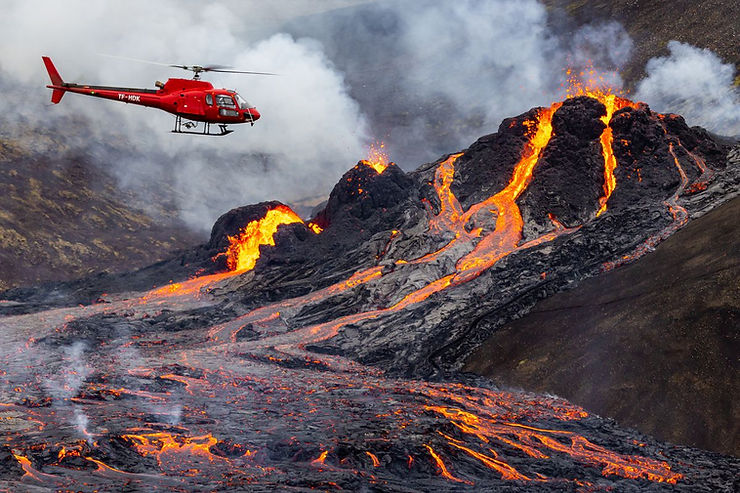By: Reese Yan
In 2021, the Fagradalsfjall volcano erupted in Iceland after 781 years of dormancy. Volcanoes don’t erupt often, so many tourists wanted to get a closer look and take more pictures.
The eruption was slower than average volcanoes and was the longest-lasting eruption in Iceland in the 21st Century. The Fagradalsfjall volcano erupts about every thousand years.
Fagradalsfjall is located between the Eurasian and North American tectonic plates. After some time, they start pulling apart and rubbing against each other until they both break, making the lava below erupt. Furthermore, Olafur Flovenz, director of the Iceland GeoSurvey, recently published a paper with colleagues saying this volcano wasn’t caused by a body of magma accumulating in the crust but is carbon dioxide released by deeper magma between the mantle and the crust.
During the eruption, many scientists wondered what was underneath the Earth, deep down where light cannot reach. So, on the day of the eruption, a helicopter flew to the site and picked up a bit of lava. After research, scientists discovered that the lava from the Fagradalsfjall volcano was full of crystals. Tests showed the crystals contained a wide range of material from different parts of the mantle. The results were surprising but definitely a step forward to figuring out how volcanoes erupt. “We have a really detailed record of the different types of composition that we can find in the mantle now, and it must be very heterogeneous, very variable,” said Frances Deegan.
The information from the Fagradalsfjallmore volcano offered more details on the Earth’s layers and how volcanoes erupt. I believe with more information researchers will get even better at predicting when volcanoes erupt, so when a disaster is imminent, we will be able to be more aware of it.











